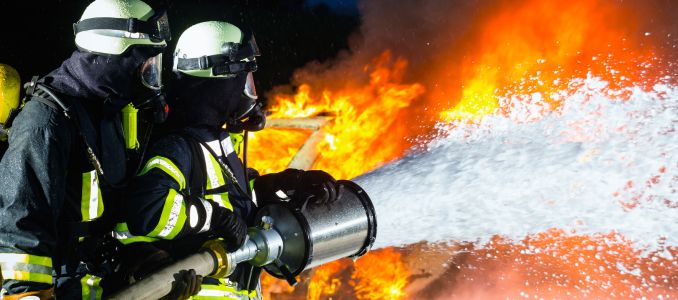
Breakthrough Technology Offers New Path to Destroy PFAS in Firefighting Foam
A Battelle-developed treatment system demonstrates 99.9% PFAS destruction in AFFF using supercritical water oxidation, offering an alternative to incineration and new hope for environmental cleanup.
- By Amy Dindal
- Jul 15, 2025
A supercritical water oxidation (SCWO) process developed by engineers at Battelle is showing significant promise as a safe and effective method to eliminate per- and polyfluoroalkyl substances (PFAS) in aqueous film-forming foams (AFFF), which have long been a source of environmental concern.
Used since the 1940s in a wide range of consumer and industrial products—from non-stick cookware and stain-resistant fabrics to food packaging and paints—PFAS compounds are resistant to natural breakdown and have been linked to a growing number of environmental and public health risks. The substances are often referred to as “forever chemicals” due to their persistence in the environment.
One major source of PFAS contamination is AFFF, a firefighting foam used for decades to suppress flammable liquid fires. While effective in controlling hazardous Class B fires, the foams also introduce PFAS into water, soil, and nearby communities. According to the U.S. Environmental Protection Agency, more than 120,000 sites in the United States may have experienced PFAS exposure. Millions of gallons of AFFF remain stockpiled at fire stations, airports, and military facilities across the country.
Current federal regulations require the Department of Defense to phase out PFAS-based AFFF and remove it from active use, leaving agencies with the challenge of how to safely dispose of large volumes of the foam.
SCWO Technology Offers Chemical Destruction of PFAS
A recent peer-reviewed study published in ACS ES&T Water evaluated Battelle’s SCWO system—commercialized as the PFAS Annihilator® and now operated by Revive Environmental—and found it to be more than 99.9 percent effective in destroying PFAS compounds in concentrated AFFF.
Unlike incineration, which risks transferring PFAS into the air, ash, or leachate, SCWO relies on a combination of high heat and pressure to break down the strong carbon-fluorine bonds that make PFAS difficult to degrade. Researchers say the method fully mineralizes the chemicals into inorganic fluorine, water, carbon dioxide, and other benign end products.
“This means the target PFAS measured by EPA Method 1633 are destroyed,” said Kavitha Dasu, lead author of the study and a PFAS expert. “And even the PFAS that weren’t measured by 1633 are also being destroyed.”
The process allows for mass balance analysis to confirm destruction of both known and previously unmeasured PFAS compounds.
Field Trials and Cost Efficiency
Battelle’s engineers reported successful field demonstrations in New Hampshire and Ohio, validating the system’s scalability and effectiveness. Unlike traditional treatment methods, SCWO’s cost-efficiency is linked to fluid volume, not PFAS concentration, making it a feasible option for treating highly contaminated waste streams.
Broader Implications
The study comes at a time when local, state, and federal agencies are under increasing pressure to manage PFAS contamination. “Until now, fire departments have had no way to safely dispose of this toxic foam,” said Ohio Governor Mike DeWine. “Now we’ll be able to destroy AFFF to prevent dangerous exposure to PFAS and avoid environmental contamination.”
Looking ahead, Battelle and Revive Environmental aim to extend SCWO applications to PFAS-contaminated solids and other waste forms, potentially offering a broader solution to one of the nation’s most pressing environmental challenges.
About the Author
Amy Dindal is Battelle’s Director of Environment & Agriculture Business Line. Ms. Dindal is responsible for oversight of a multidisciplinary team of more than 200 staff that includes scientists, engineers, chemists, biologists, toxicologists, and modelers. In this role, Ms. Dindal has applied her technical understanding of chemical processes and analytical chemistry to support development of innovative approaches and technologies to characterize, model, and destroy PFAS compounds. Prior to joining Battelle in 2002, Ms. Dindal was a Research Scientist with Oak Ridge National Laboratory (ORNL) for 10 years. While at ORNL, she obtained a U.S Patent (No. 6,645,908) for a method for producing a sol-gel derived sorbent material and was an R&D 100 award winner in 1997. Amy holds a Bachelor of Science degree in Chemistry from Penn State University and has been a certified Project Management Professional (PMP) since 2006.